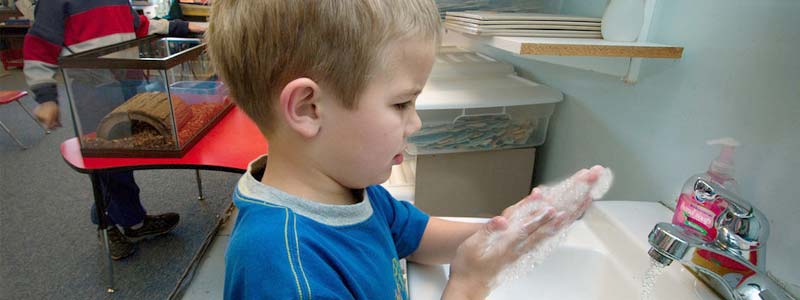Seeing your children in sick or in pain is hard. Seeing them sick over and over again with the same thing, and not being able to help, is even worse. For many families, recurring strep throat in a child is an unfortunate reality.
In the past, the only way to prevent chronic strep cases was to remove the child’s tonsils, which comes with its own plethora of dangers. New studies bring to light some answers for the families dealing with this painful illness.
Group A Streptococcus
Strep throat, caused by bacteria called Group A Streptococcus, presents itself as white puss-filled patches on the back of the throat, along with very red and inflamed tonsils. Strep throat is accompanied by a fever and a scratchy, painful sore throat.
What is Recurring Strep Throat
Our clinic sees cases of strep throat every year. When we see the same children over and over, it becomes classified as recurring. Strep is spread through close contact and respiratory particles, so children who attend school or daycare are likely to pick it up easier than those who are not exposed.
New Studies
There have been recent studies that point to a link to genetic variances leaving some kids more susceptible to the bacteria than others. The researchers at the La Jolla Institute for Immunology studied the removed tonsils of 26 children with chronic strep throat, and 39 sets of tonsils from children who didn’t suffer chronic strep, but had them removed for other reasons.
It was found that in children with chronic strep, the tissue genetically had weaker immune responses to the exposure of the bacteria. The tonsils of those children who were not chronic sufferers did not hold those same markers.
While the test base isn’t large enough to make any definitive conclusions, it is a good base to further research. Continuing research could open future doors to vaccines that will help prevent the recurrence of this miserable infection.
Dangers of Strep Throat
Strep throat nearly always comes with a high fever. A fever that is left untreated can cause damage to the heart, brain, and can cause kidney damage. For proper diagnosis and treatment, your child should be seen by their primary care physician. Their doctor can diagnose and prescribe the medications needed to get your child healthy again.
Throughout history, strep and other tonsil related illnesses have resulted in almost automatic tonsil removal. In recent decades, a child would need to see at least seven or eight occurrences of strep in a 12 month period to be considered for a tonsillectomy.
If the tonsils (and often the adenoids) are removed, it may not prevent strep throat and can contribute to future illnesses. The adenoids are the immune glands in the roof of the mouth, and they help your body create the antibodies to fight off infection. They’re often affected by strep throat, but removing them leaves your child vulnerable to other illnesses.
A tonsillectomy requires a hospital visit, anesthesia, and the possibility of complications due to excess bleeding, pain, infection, and more. It really should be a last resort. Furthering studies to create a vaccine for children with the genetic predisposition of this illness would help eliminate the need for this procedure, except in the worst cases.
It’s tempting to avoid the doctor’s visit and treat this illness with home remedies, but in this situation, all you’d be doing is treating the symptoms. While your child is taking their doctor-prescribed medications, you can help them manage their discomfort and try to avoid them spreading it to others.
Natural Symptom Remedies
It’s important to check with your child’s doctor before treating symptoms and pain related to strep throat. Here are a few options you can look into:
- Sleep – Lots of it. Our bodies natural recovery process is to shut down everything that’s non-essential and focus energy on healing. If your child is tired, encourage them to sleep. If they’re too uncomfortable to sleep, resting quietly or watching movies is a great alternative.
- Soft, Smooth Foods – Nothing irritates the throat quite like scratchy or sharp foods. Avoid crunchy things like chips and crackers. Instead, go for soft and smooth foods, like mashed potatoes and jello.
- Hydrate – Drink plenty of water. If your child doesn’t do well with water, try diluted juice, tea, Gatorade, and similar drinks. Less sugar is better, but whatever it takes to get your child to hydrate is good when they’re sick.
- Run a Humidifier – Cool mist humidifiers keep moisture in the air and soothe the soreness in the throat. If you’re an essential oil enthusiast, a diffuser can work for this purpose. Be sure to clear your oil choices with your child’s doctor.

Prevent the Spread of Strep Throat
- Washing your hands, and your child’s hands, is a good start to preventing the spread of any illness, but it’s not enough on its own. Strep is spread through close quarters and respiratory particles like those expelled by coughing.
- Keep antibacterial hand-sanitizer in every room. This will encourage the rest of the family to keep clean and safe, too.
- Cover coughs with disposable tissues; throw them away as soon as you can.
- Wipe all frequently used surfaces with antibacterial wipes.
- If your family is a large one, try to keep sick members isolated from healthy members to the best of your ability.
- Keep sick kids at home. Sending sick kids to school or taking them out in public encourages the spread of germs to those who are immunocompromised.
General cleanliness will help prevent the spread and possibly the recurrence of strep in your home. If it’s not enough, consult with your family doctor to help create an action plan to solve the issue.
Camas Swale Medical Clinic is Here to Help
We’re a partner in your family’s health, and we’re here to help you get and stay healthy. Call us today to schedule a general checkup to maintain your health, or to help you identify and treat injury or illness.

